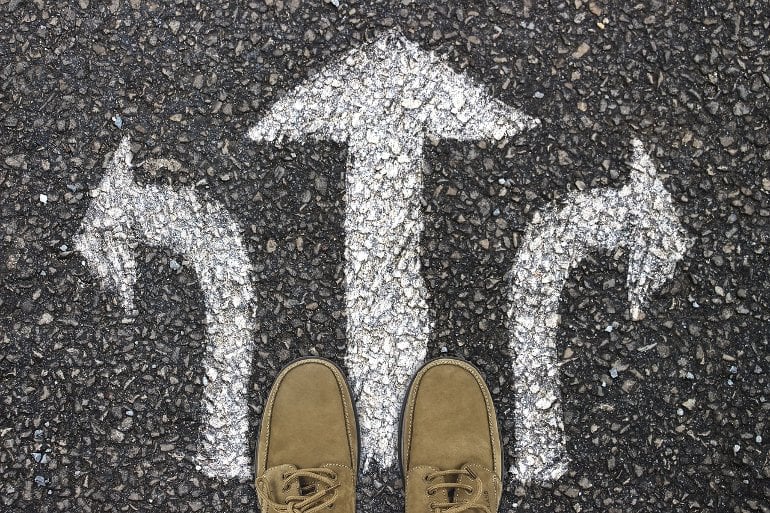Summary: Findings shed new light on how the brain orients itself in changing environment, and how the natural navigation processes can diminish as a result of Alzheimer’s disease.
Source: McGill University
Scientists have gained new insights into the part of the brain that gives us a sense of direction, by tracking neural activity with the latest advances in brain imaging techniques.
The findings shed light on how the brain orients itself in changing environments – and even the processes that can go wrong with degenerative diseases like dementia, that leave people feeling lost and confused.
“Neuroscience research has witnessed a technology revolution in the last decade allowing us to ask and answer questions that could only be dreamed of just years ago,” says Mark Brandon, an Associate Professor of psychiatry at McGill University and researcher at the Douglas Research Centre, who co-led the research with Zaki Ajabi, a former student at McGill University and now a postdoctoral research fellow at Harvard University.
Reading the brain’s internal compass
To understand how visual information impacts the brain’s internal compass, the researchers exposed mice to a disorienting virtual world while recording the brain’s neural activity.
The team recorded the brain’s internal compass with unprecedented precision using the latest advances in neuronal recording technology.
This ability to accurately decode the animal’s internal head direction allowed the researchers to explore how the Head-Direction cells, which make up the brain’s internal compass, support the brain’s ability to re-orient itself in changing surroundings.
Specifically, the research team identified a phenomenon they term ‘network gain’ that allowed the brain’s internal compass to reorient after the mice were disoriented.
“It’s as if the brain has a mechanism to implement a ‘reset button’ allowing for rapid reorientation of its internal compass in confusing situations,” says Ajabi.
Although the animals in this study were exposed to unnatural visual experiences, the authors argue that such scenarios are already relevant to the modern human experience, especially with the rapid spread of virtual reality technology.
“These findings may eventually explain how virtual reality systems can easily take control over our sense of orientation,” adds Ajabi.

The results inspired the research team to develop new models to better understand the underlying mechanisms.
“This work is a beautiful example of how experimental and computational approaches together can advance our understanding of brain activity that drives behaviour,” says co-author Xue-Xin Wei, a computational neuroscientist and an Assistant Professor at The University of Texas at Austin.
Degenerative diseases
The findings also have significant implications for Alzheimer’s disease. “One of the first self-reported cognitive symptoms of Alzheimer’s is that people become disoriented and lost, even in familiar settings,” says Brandon.
The researchers expect that a better understanding of how the brain’s internal compass and navigation system works will lead to earlier detection and better assessment of treatments for Alzheimer’s disease.
About the study
Funding: The research was supported by the Natural Sciences and Engineering Research Council of Canada and the Canadian Institutes of Health Research.
About this neuroscience research news
Author: Shirley Cardenas
Source: McGill University
Contact: Shirley Cardenas – McGill University
Image: The image is in the public domain
Original Research: Open access.
“Population dynamics of head-direction neurons during drift and reorientation” by Mark Brandon et al. Nature
Abstract
Population dynamics of head-direction neurons during drift and reorientation
The head direction (HD) system functions as the brain’s internal compass, classically formalized as a one-dimensional ring attractor network. In contrast to a globally consistent magnetic compass, the HD system does not have a universal reference frame. Instead, it anchors to local cues, maintaining a stable offset when cues rotate and drifting in the absence of referents.
However, questions about the mechanisms that underlie anchoring and drift remain unresolved and are best addressed at the population level. For example, the extent to which the one-dimensional description of population activity holds under conditions of reorientation and drift is unclear.
Here we performed population recordings of thalamic HD cells using calcium imaging during controlled rotations of a visual landmark.
Across experiments, population activity varied along a second dimension, which we refer to as network gain, especially under circumstances of cue conflict and ambiguity. Activity along this dimension predicted realignment and drift dynamics, including the speed of network realignment.
In the dark, network gain maintained a ‘memory trace’ of the previously displayed landmark. Further experiments demonstrated that the HD network returned to its baseline orientation after brief, but not longer, exposures to a rotated cue. This experience dependence suggests that memory of previous associations between HD neurons and allocentric cues is maintained and influences the internal HD representation.
Building on these results, we show that continuous rotation of a visual landmark induced rotation of the HD representation that persisted in darkness, demonstrating experience-dependent recalibration of the HD system.
Finally, we propose a computational model to formalize how the neural compass flexibly adapts to changing environmental cues to maintain a reliable representation of HD.
These results challenge classical one-dimensional interpretations of the HD system and provide insights into the interactions between this system and the cues to which it anchors.






